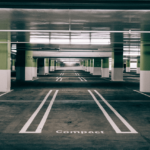11 Ways To Prevent Accidents In The Rain
Driving a vehicle is a dangerous activity, and there are few situations more dangerous than driving when the conditions are wet. Snow and rain reduce reaction times and make it harder to see ahead of your vehicle, creating driving conditions that are especially risky.
To keep yourself safe on the roads, follow some basic tips the next time it starts to rain.
- Go slow. Decelerating your car during a rainstorm gives you more time to react, especially if others around you are driving irresponsibly. Your brakes will work better if they don’t have to fight the momentum of your car at a high speed.
- Know your route. If you’re checking your maps or adjusting your route due to traffic on the traffic, you’re more likely to have an accident or a near miss due to your distracted driving.
- Turn off your music. Similar to the tip above, reduce the number of distractions in your vehicle to help keep your focus on the cars around you. Don’t let a good song cause a bad accident.
- Turn on your lights. It’s the law that cars must turn on their lights during adverse conditions, so be sure to flick your lights on in the rain- even if it’s the middle of the day!
- Follow the car ahead of you. Their tracks have more traction and reduce the risk of hydroplaning.
- Give a lot of following room. Giving yourself enough space to brake your car is important to reduce the risk of an accident, so leave more space between you and the next car than you usually would.
- Keep your windows clear and don’t let your windshield fog up. Use your defroster or air conditioning to reduce any fog on your windshield, or in a pinch, roll down your windows to neutralize the temperature.
- Keep an eye on brake lights in front of you. You should be maintaining a good following distance, so when you see brake lights you know you should decelerate with enough time to stop. Consider simply letting go of the accelerator to reduce the risk of losing control of the vehicle by slamming the brakes.
- Use caution with pooled water. If you can’t tell how deep a puddle is, approach with extreme caution. Drive slowly and assess the depth before your car is in deep enough to damage modern electrical equipment. The last thing you want is a broken car due to water damage.
- Check your tire pressure. If your tires have low tread, they aren’t good at resisting hydroplaning. A tire with good tread gives you more traction and allows your vehicle to grip the road, which is much safer
- Change your windshield wipers. Maintaining good visibility is critical for safe driving, so if your windshield wipers aren’t very good, switch them out for better ones! You can also by water-resistant coatings for your vehicle that make rain slide off easier.
Recent Posts








